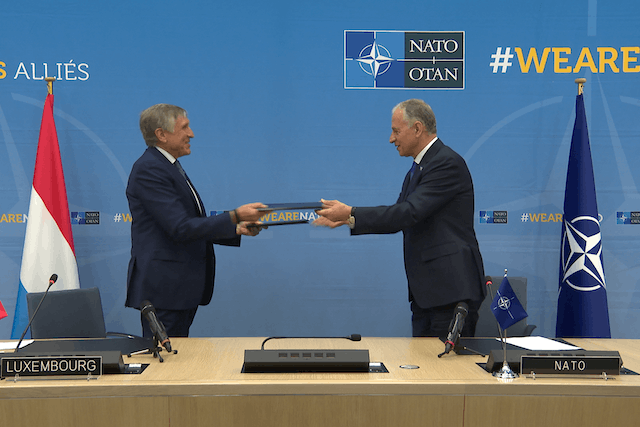Defence minister François Bausch (déi Gréng) on 14 June signed an agreement with Nato on a €6.7m investment that will form part of Nato’s Situation Centre (Sitcen), which provides situational awareness to the North Atlantic Council and Nato’s military committee during times of peace, tensions, crisis or for training exercises.
The European Space Agency estimated that around 9,400 tonnes of space objects are orbiting Earth. This includes around 34,000 space debris objects larger than 10cm and millions of smaller items.
It has become essential to monitor space debris “in order to guarantee the general security of military and civilian space assets,” the defence ministry said in a statement about the risks posed by debris, for example, to satellites.
Over three years, Luxembourg will help fund the development of a system to improve Nato’s space situational awareness capabilities. “This investment aims to position Luxembourg as a major player in the space industry within Nato and to prove the defence's willingness to invest in this very important area in the future,” the ministry’s statement said further.
Luxembourg is already collaborating with Nato on its GovSat satellite, which provides satellite communications capacity to the organisation. A military satellite, which was given a larger budget by parliament in November last year, will also help provide Nato with Earth observation data when it launches.
The projects are part of an effort by Luxembourg to boost its defence spending, which lags behind a 2% of GDP pledge made by all Nato members in 2014. Last year, Luxembourg spent around 0.6% of GDP on its military, with plans to raise this amount to 0.72% by 2024.
This includes spending on refurbishing the headquarters of Nato’s Support and Procurement Agency, the acquisition of a military transport plane, and spending on a cyber range, a testing ground for digital mechanisms that allows training against cyber threats.
